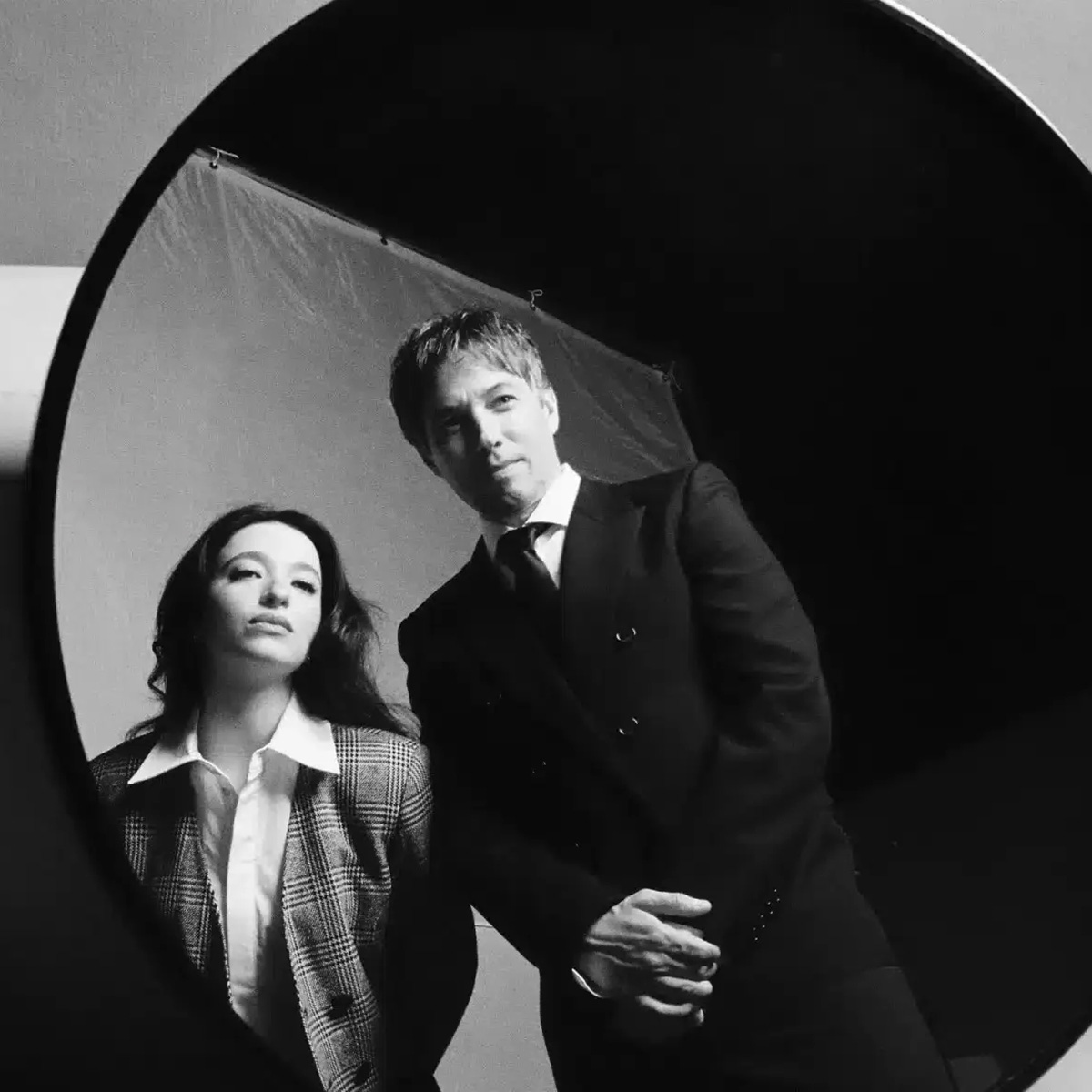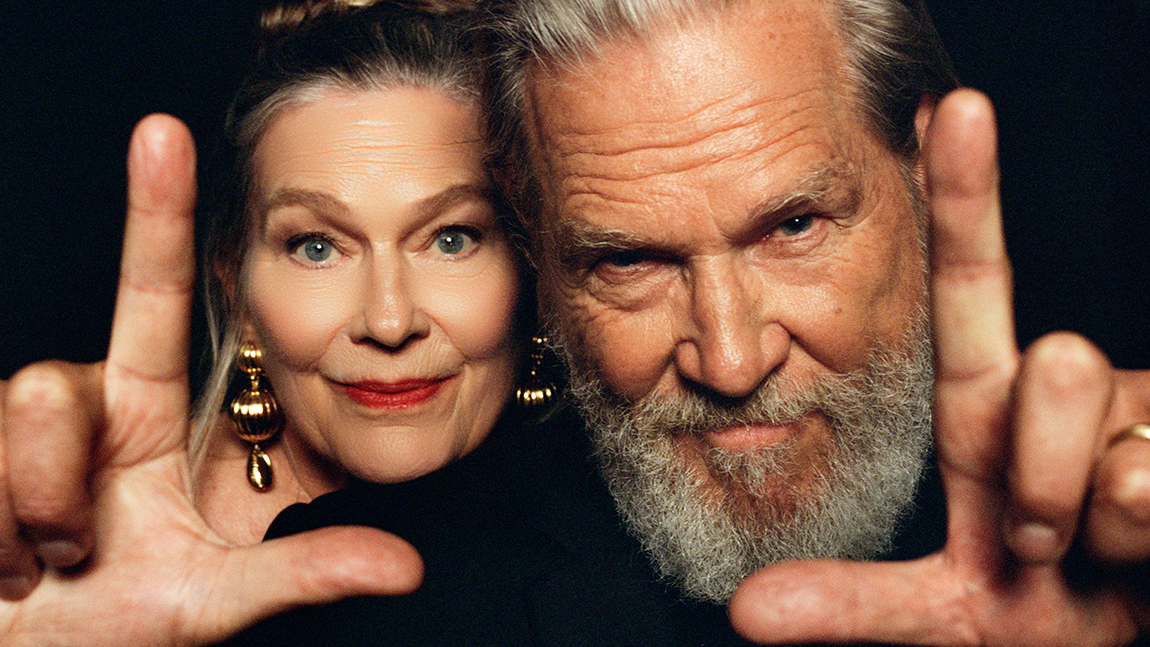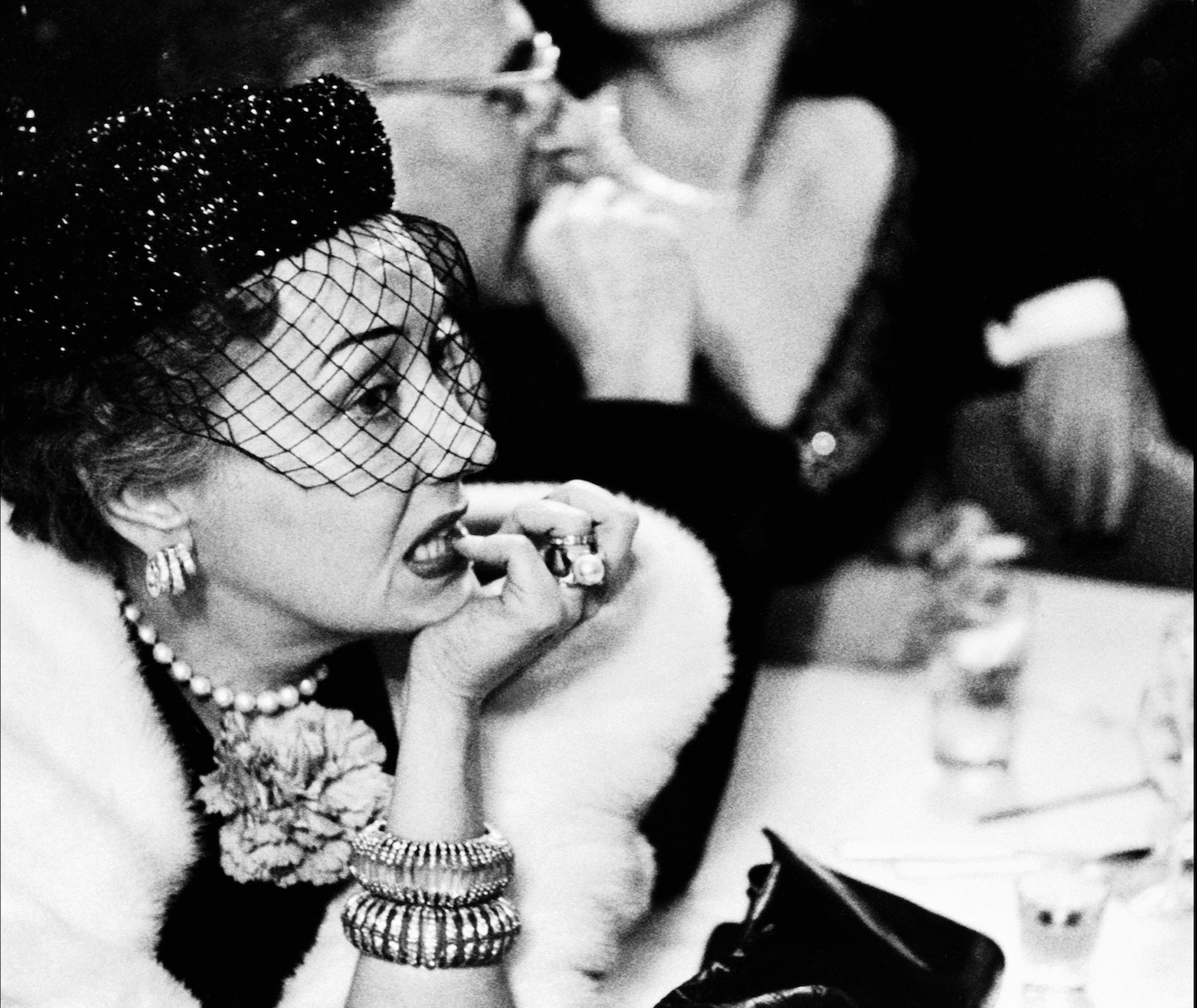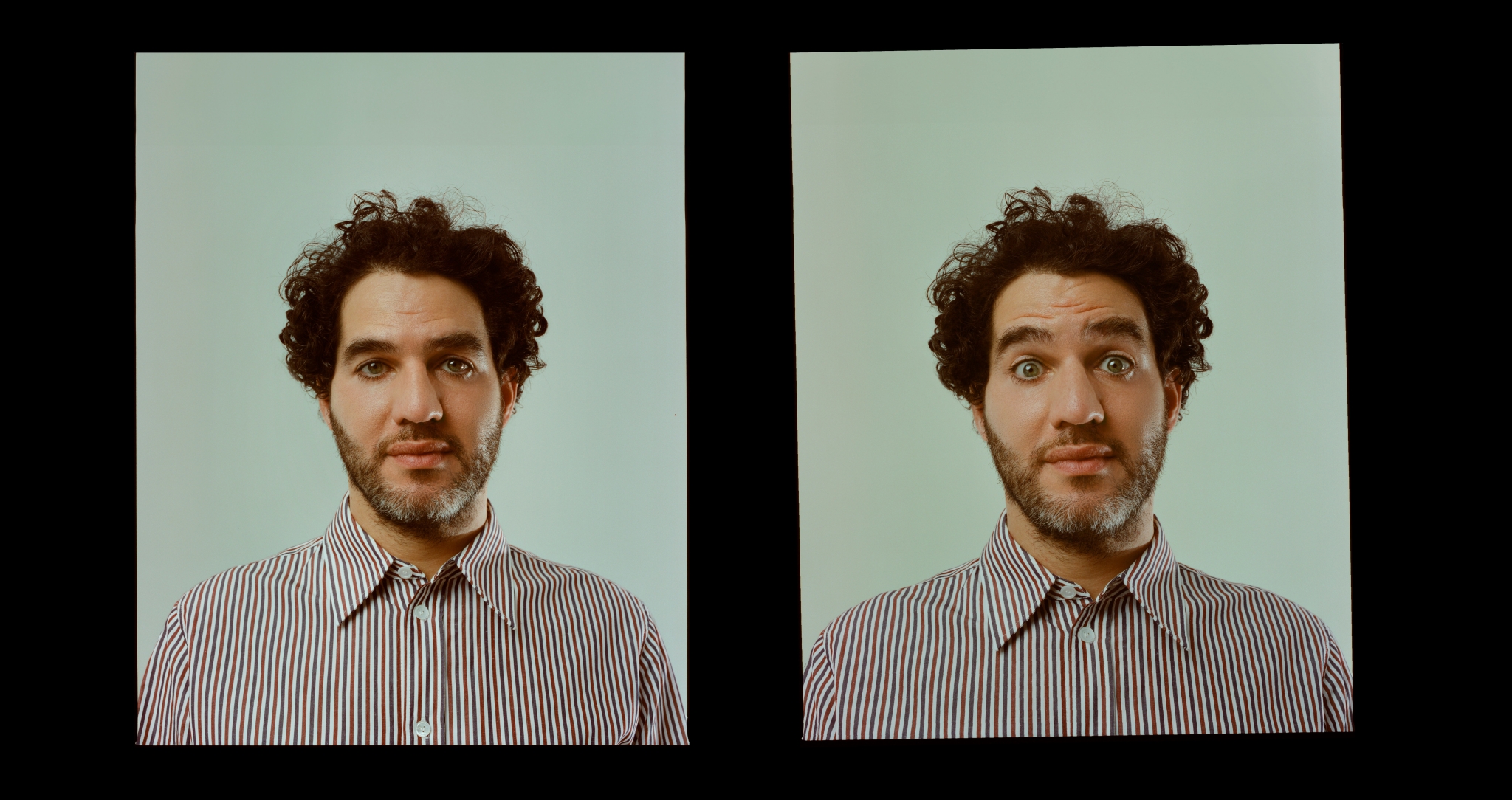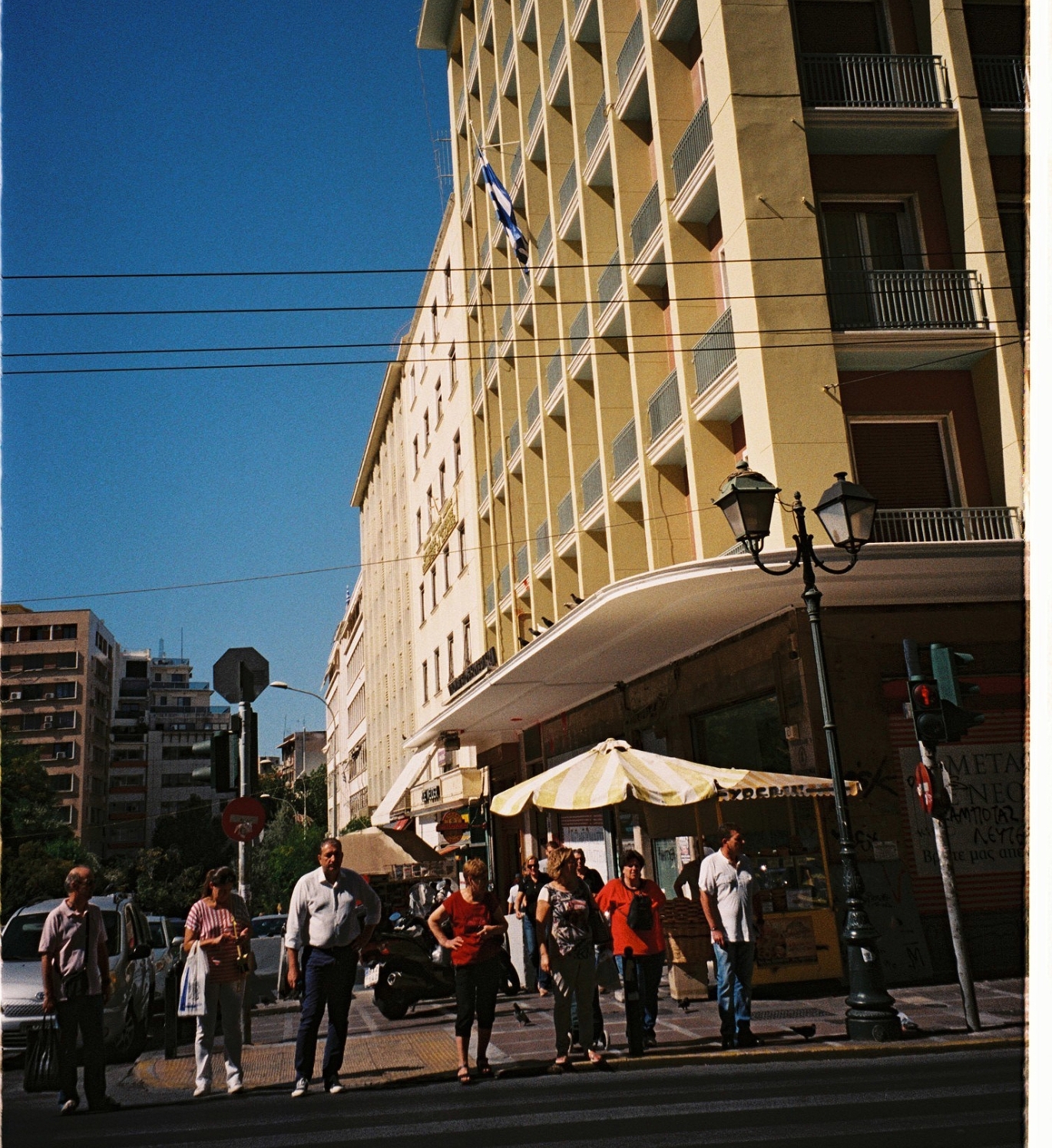
From Issue 7, A Rabbit’s Foot Deputy Editor pens a literary dispatch from the Greek capital, painting a portrait of a city full of delicious oddities and a new wave of creatives calling it home.
Mr Spyrou’s cat was the first new friend I made in Athens. Outside the apartment on Fokinou Street, which is a dusty lane scattered with unremarkable antique shops (sandwiched between the tireless EO1 highway that divides downtown and the quiet Pangrati quarter), Evie would see me off each morning. Old Mr Spyrou had no time for me, but Evie did; and after a couple of days I allowed her into the building, fed her leftover filo pastries from breakfast, and we grew attached to each other; because in Athens, they say, it is the cats who see and know everything, and so it pays to be kind to them.
Christine Tz.K. is not an Athenian cat, but by those standards she might well have been. I had first met Christine through a friend in London who attended one of her artist retreats in Hydra or Thessaloniki, and as one of the city’s most connected creatives, she kindly agreed to show me around for a few days. I was writing a piece on Athens’ cultural renaissance through the perspective of someone (me) who has Greek roots. Our other mutual friend was Chris Kontos: the omnipresent photographer and editor behind Kennedy Magazine, a publication famous for shaping the fashionable image of New Athens abroad.
I had been to Athens before, but I always sought an older idea of the city that grew out of my being a part of the diaspora: the creaking tavernas, rebetika clubs, and the lingering ghosts of Giorgios Seferis, Patrick Leigh Fermor, and Henry Miller, who wrote about Greece as a place of myth, not modernisation. This time I wanted to understand the image of New Athens through people like Christine’s eyes, as well as those of a few other well-placed friends. But the first time we met up, it was at a traditional, and recently-opened, taverna in Kolonaki called Mpirmpilo. She happened to stand next to me as I was walking from Pangrati, and I remember finding her beautiful immediately; more than I had in London when we first met. “Chris [Kontos] used to eat here all the time,” she remarked when we stepped into the restaurant—a sentence she knew would make an impression on me. We feasted on horiatiko salads, fried courgettes, saganaki fried cheese, loukaniko sausages, and flaky cheese pies, and as we spoke at length—to thank her for agreeing to show me around—I gave Christine a large bar of milk chocolate from Harrods, wrapped in gold foil and an ivy green sleeve.
Gifting in Greece is far less awkward than in England. The Greeks know how to give and receive without making a fuss about it, which is why their hospitality seems like a second nature. There’s no cloying “you shouldn’t have.” Just take the damn thing; and a few days later, when you least expect it, something good will return in your lap. Christine was happy with the gift, as I thought she might be—the gold Harrods logo meant something foreign and unattainable—and I would spot it again a few days later at her apartment where it was neatly displayed on a cabinet like an impressive book.
When we had finished our lunch, she invited me to help her find a birthday present for her friend, and we took off to the commercial quarter of Monastiraki, and into the bustle of the downtown area, where there were many cats: a good omen.
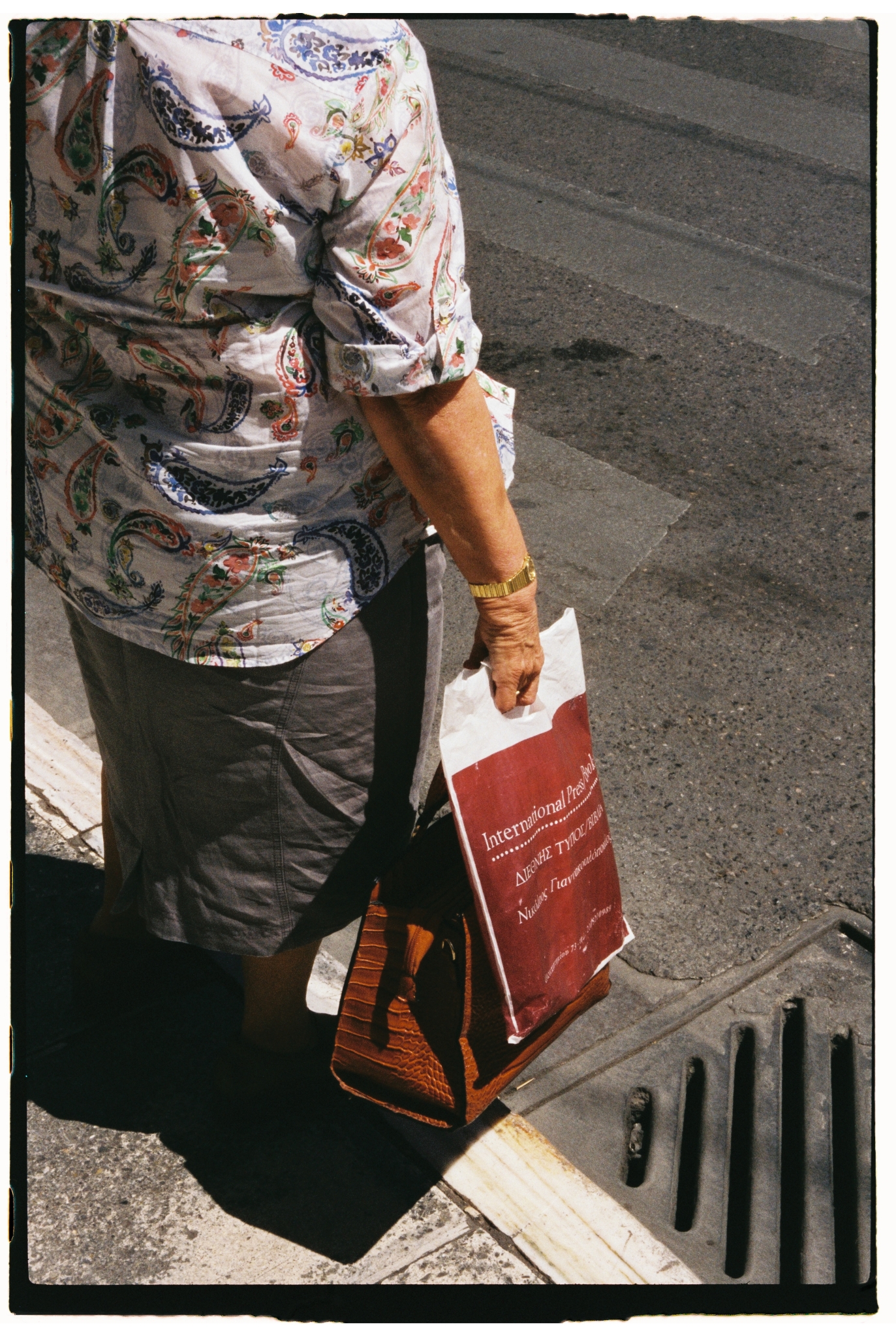
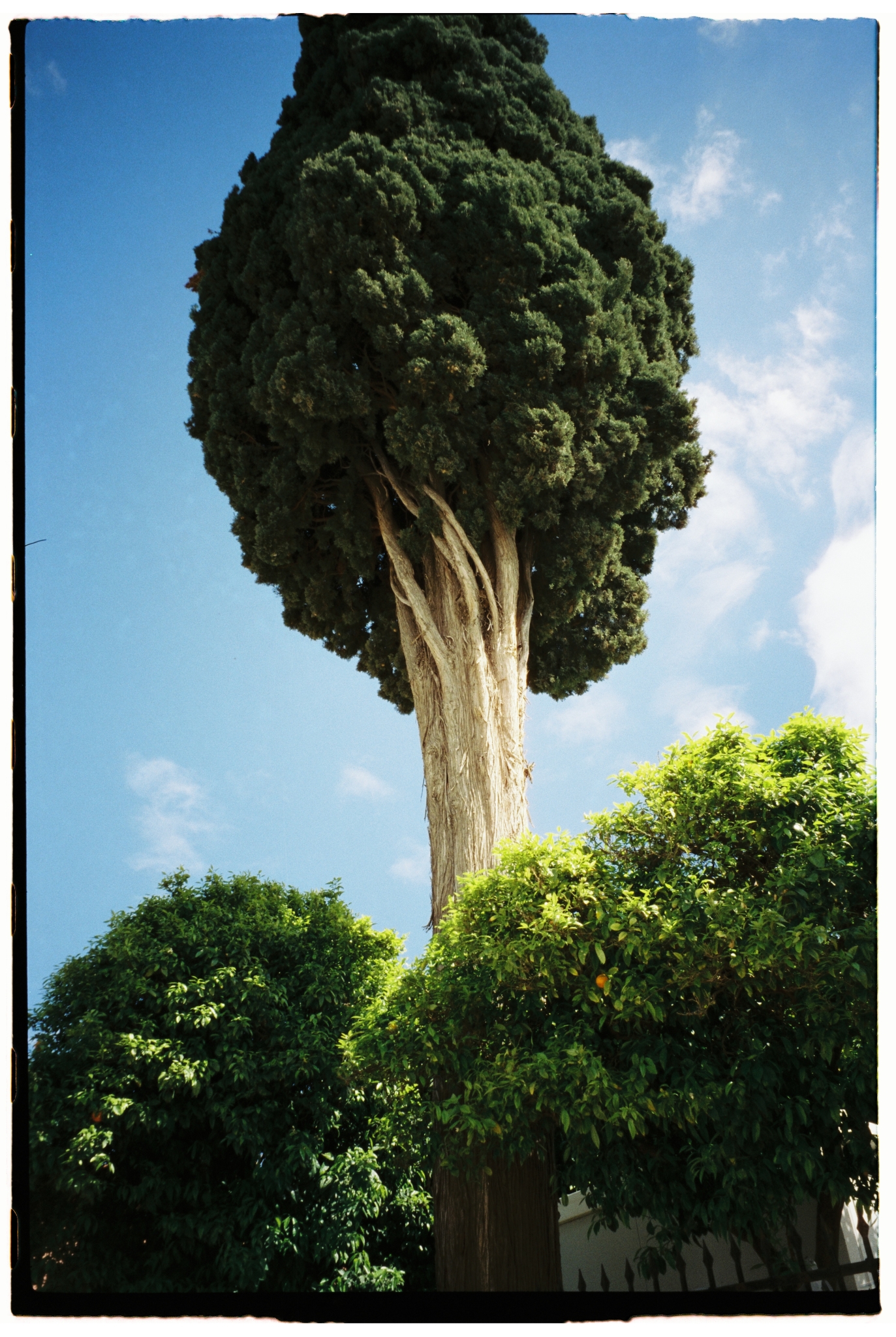
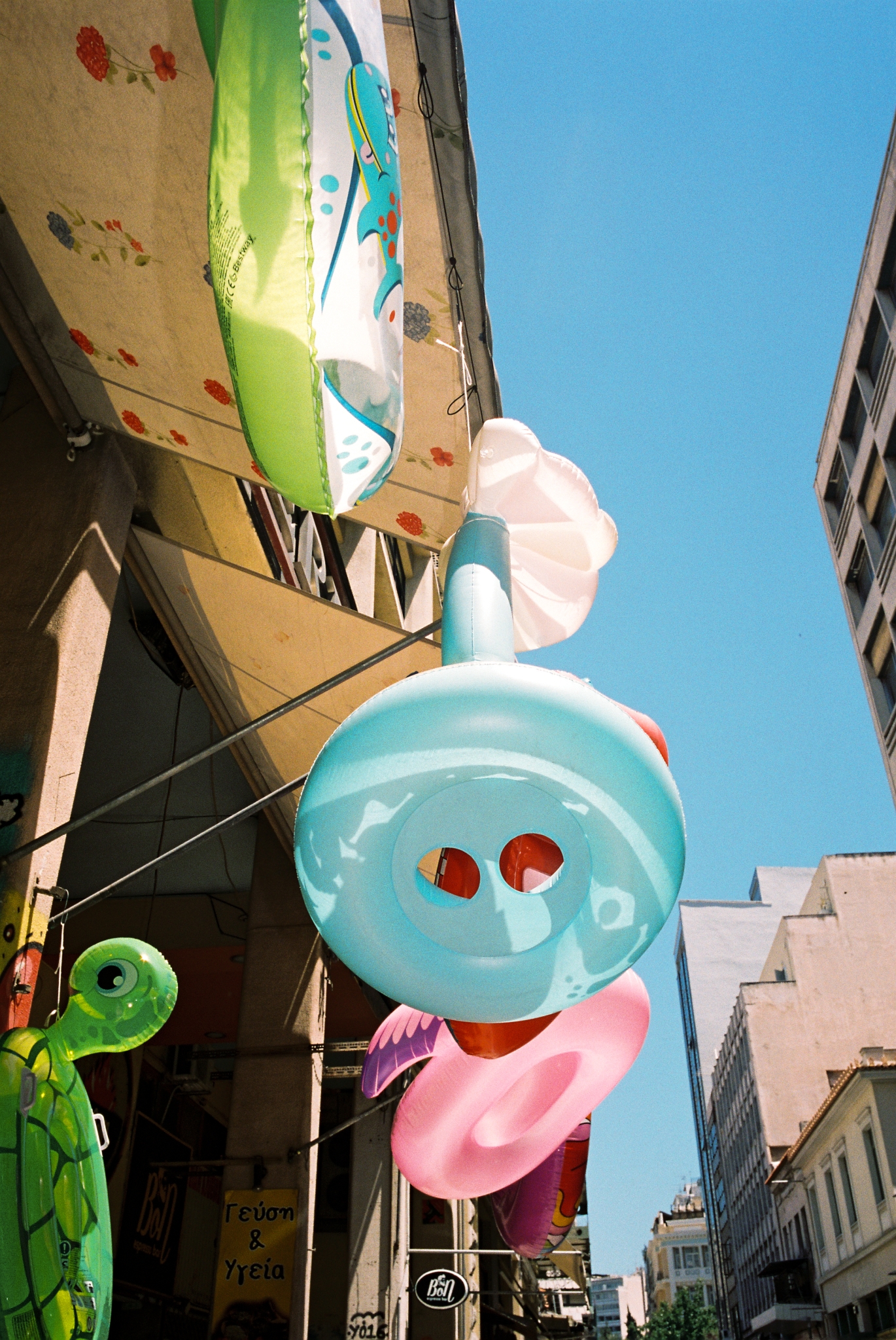

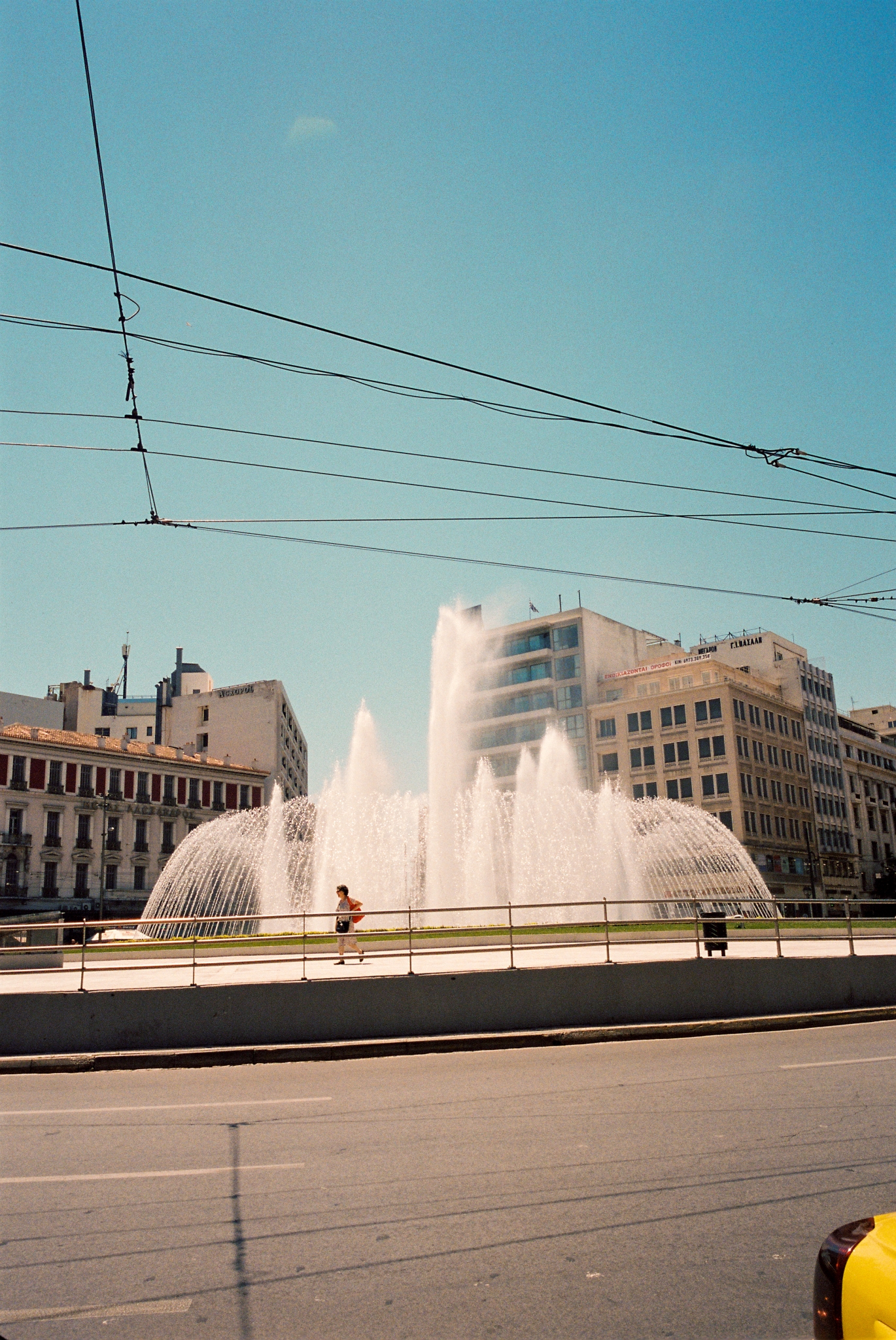
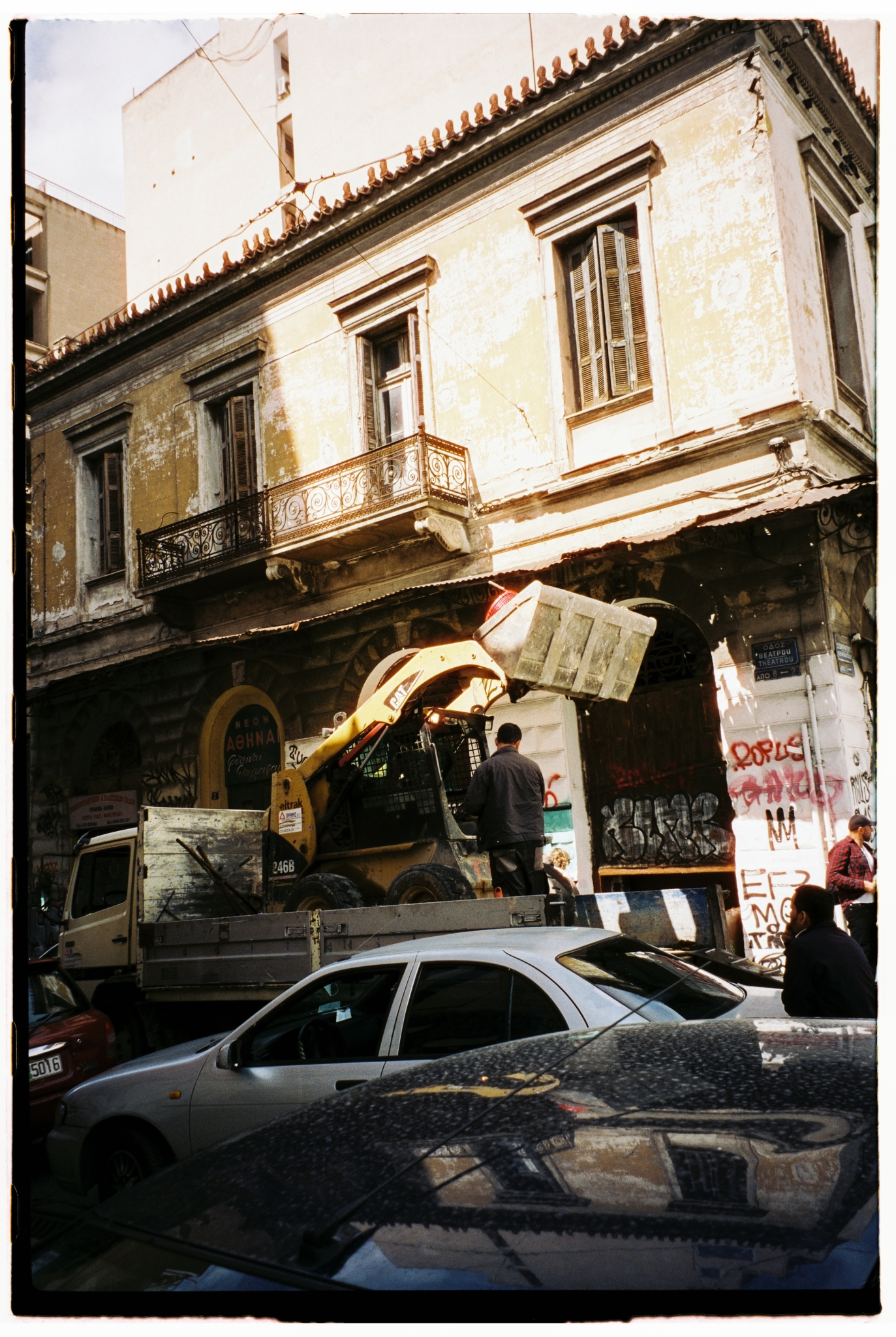
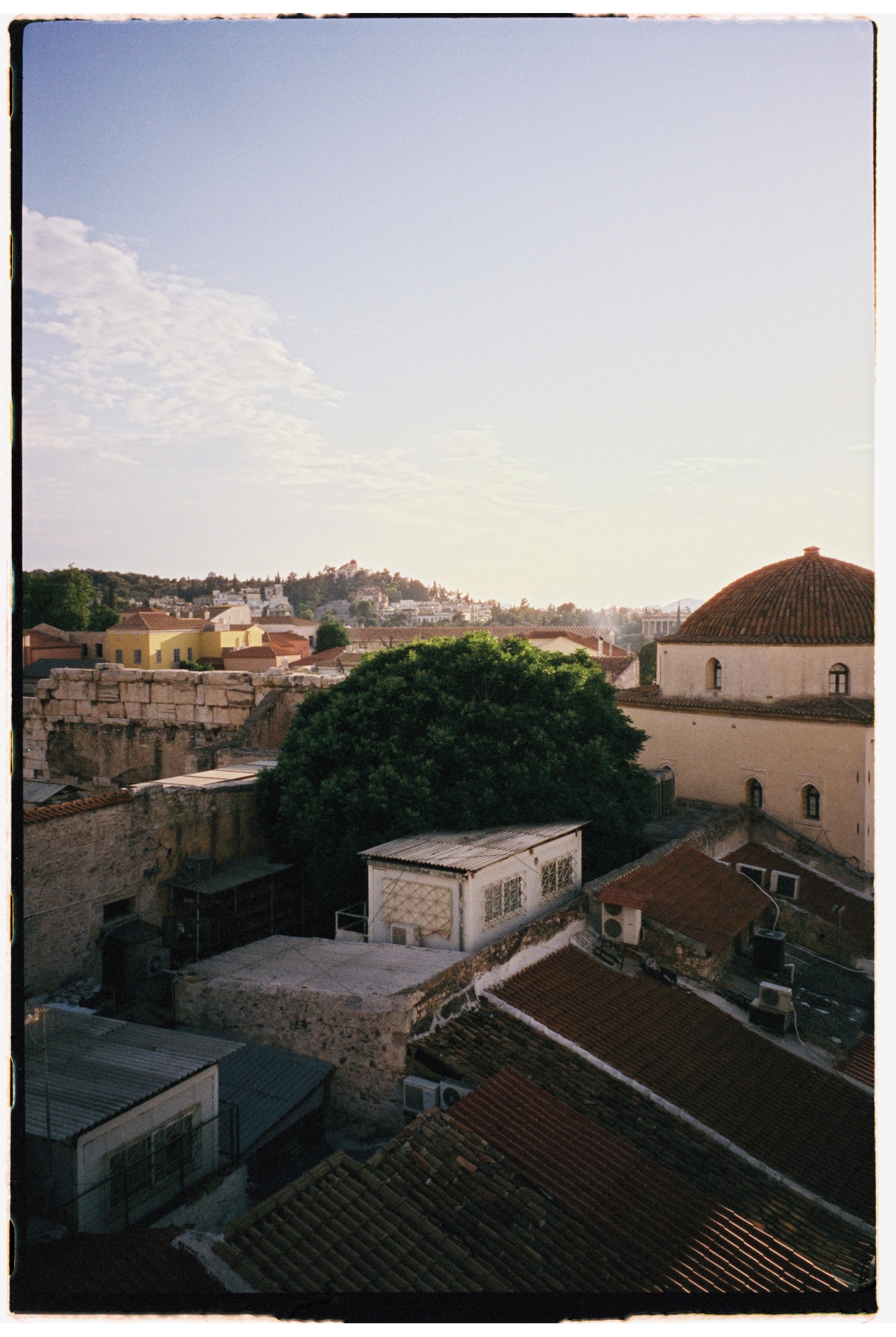
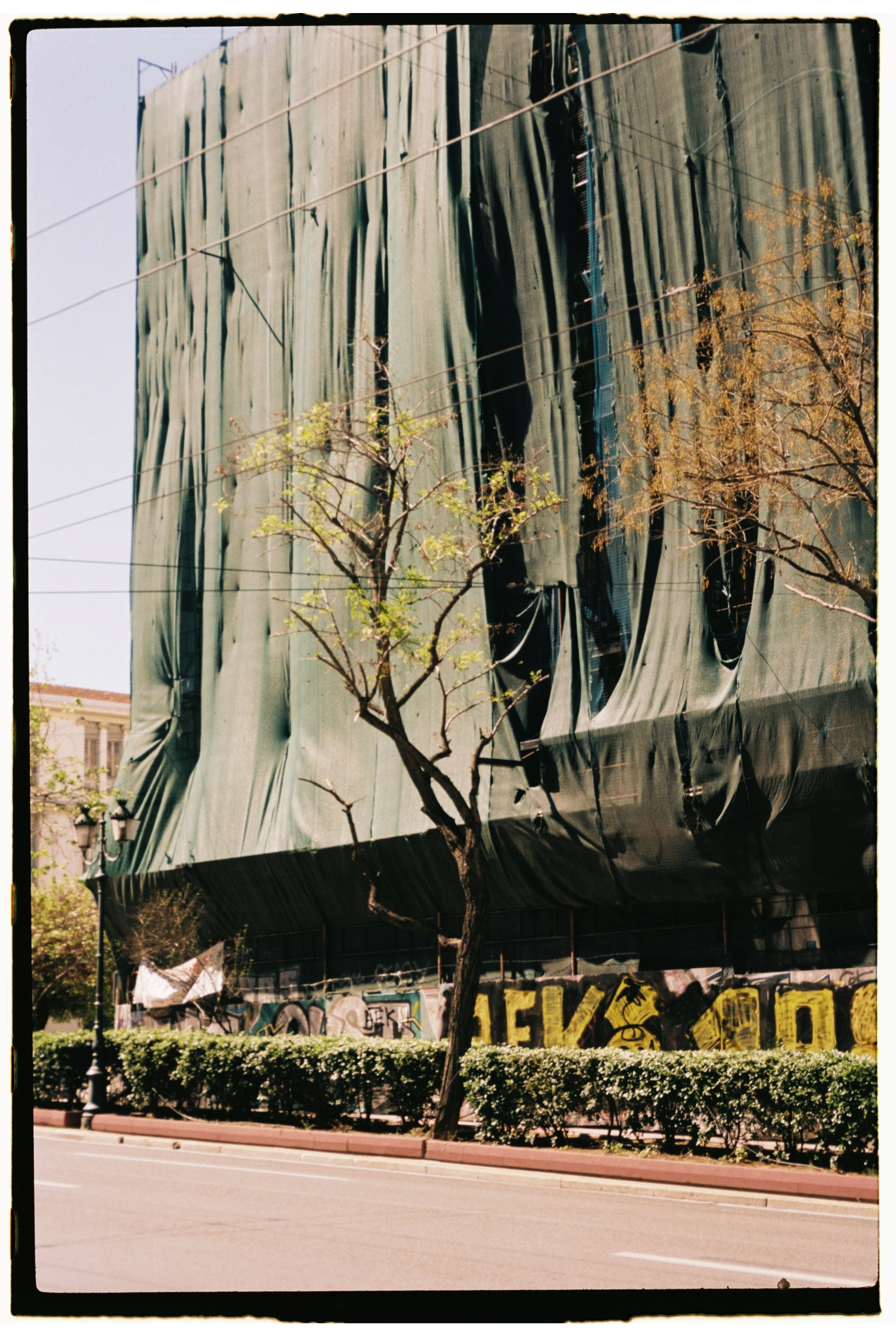
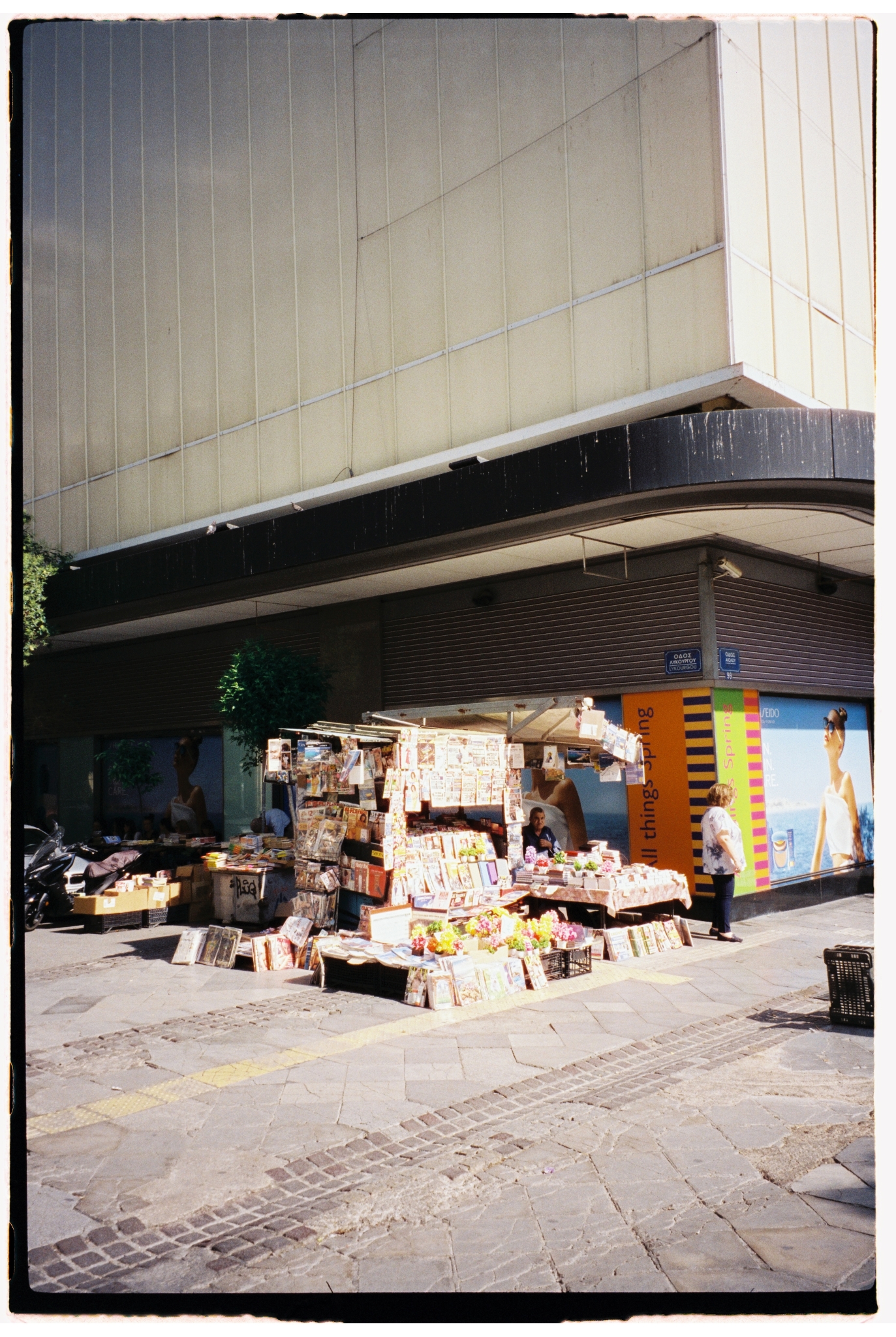
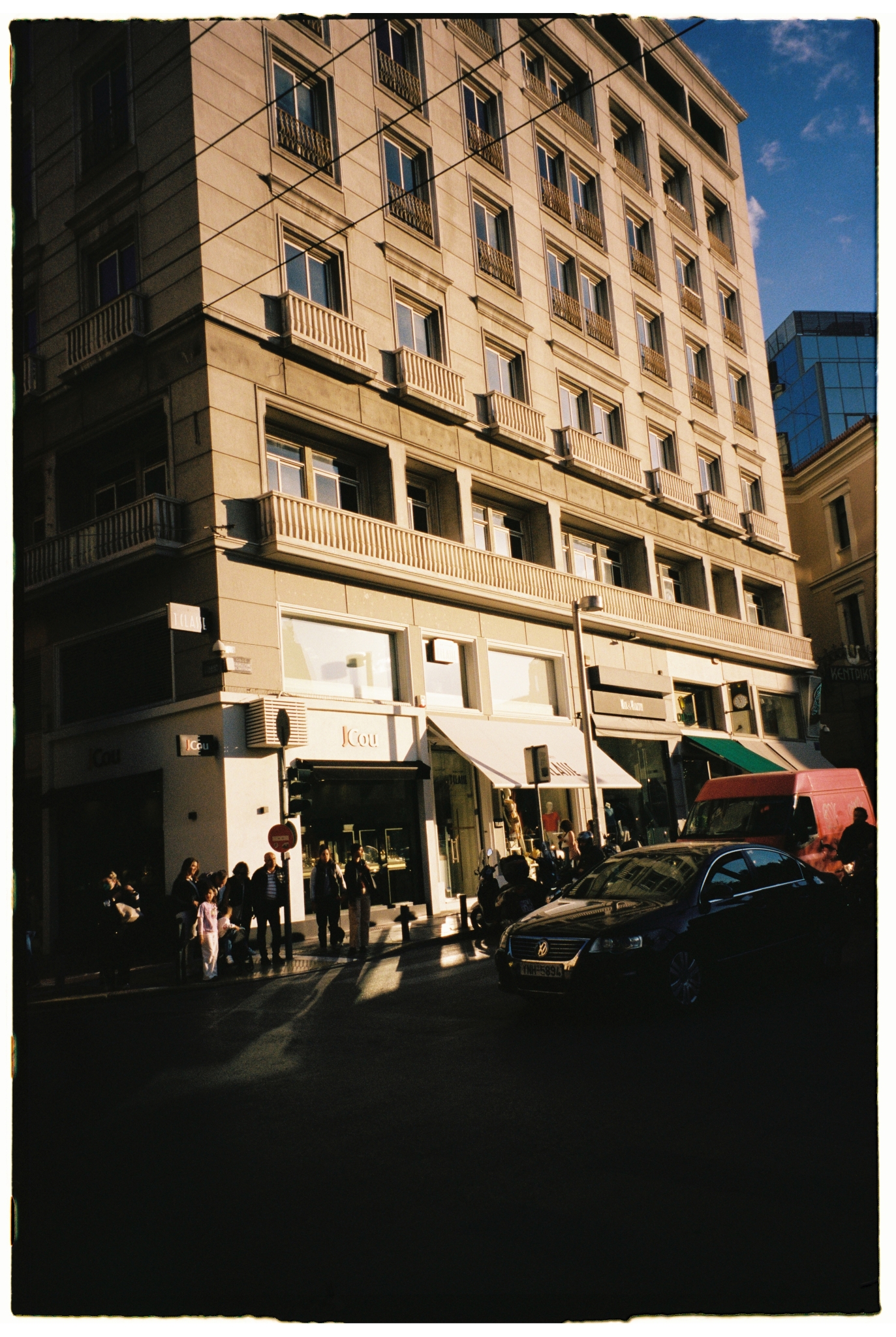
Athens, unlike London, is a place of tightly-huddled, distinct quarters which schizophrenically switch personalities by crossing a single street; so there is no sense of continuity. In the ‘triangle’ that defines the commercial downtown area, Monastiraki is a place of malls, Zaras, Massimo Duttis, and chain cafes, and it contains the grand central point of Sygmata Square, where the Houses of Parliament are situated and where the famous Hotel Grande Bretagne is; a favourite of actors and politicians, including Churchill. Psirri is the nightlife and culture quarter—a gathered and scattered maze of busy neon-soaked alleys enlivened by drinking dens, Michelin-approved eateries, taxi driver-approved snack-bars, and hip residents. Walking there after-hours, zipping from this place to that, feels like being encased in a giant pinball machine. A little way south is the Plaka, the gateway to the Acropolis; the old town: a romantic scene of Greek republic and Ottoman architecture, souvenir shops, streets built on hills that lead to relaxing cafes with low rooftops, slumbering cats under bougainvillaea, and ancient ruins that surprise you at each impasse. The areas outside of the triangle are the most interesting. There is the sketchy Omonia and the anarchist enclave of Exarcheia, where the police are greeted with volleys of rocks. Kolonaki’s wide boulevards and terraced cafes are where the city’s wealthy stay, and Pangrati is a bohemian quarter to the south; leafy, local, and the cause of a new debate on gentrification. Then, as you follow Syngrou Avenue, you come to Piraeus, to the sea, to the raucous old port that has welcomed sailors from every empire, and has seen them off too.
Following Christine through Monistaraki was no easy feat. Like most Greek people, she was a series of contradictions: She moved quickly, but she was never fast. She was aimless in her general direction, but she always ended up where she had to be. She was surrounded by a bright light, but it dimmed in sudden moments of inner-confrontation, and her eyes gave it all away. Her kindness was deeply sincere, but she had a wicked, and sometimes mean, sense of humour.
“Look how European this pavement is,” she said, laughing maniacally, sarcastically, in an unexpected burst while pointing at the ground. We stepped on a traffic island next to Sygmata Square that was a mismatch of tiles and wabi-sabi concrete amendments. Her face quickly went sour: “Everything is broken! They [the government] won’t do anything about it.” Athenians are always going on about the problems in their city. “They won’t do anything about it,” is a common phrase, spoken like a shrug; an acceptance not to expect anything from the elected officials. They try to point it out to you before you get the chance to notice, but if you do, they’ll defend Athens, its problems, its pavements, as part of a beautiful tableau of this chaotic city.
An elderly American woman stopped us in the street. She overheard us discussing the wrath of St John and Christmas decorations, and she proceeded to share her knowledge of evil Cycladic fairies and other superstitions from here to the island of Chios, all things that Christine had grown up knowing, and that this woman had somehow insisted on educating her about. It was fascinating to me, but I could sense that my companion was agitated. “Greeksplaining,” Christine remarked, after we chanced an escape: “It happens all the time.” The woman was Greco-American; not that it mattered much. Having Greek roots is sometimes tricky to navigate in Greece. I often check myself as not to give the impression I am as Greek as the native-born Greeks themselves, and I am always weary of introducing myself as a Greek, because it implies I have the same shared experience as those who have been born and raised here, and who have lived through the hard times, and are now deserving of the glory of the better ones. So the diaspora are always proving themselves, as the old Pontic song Padrida M’arevo se goes: “There I was called a Greek, and in Greece I was called a xenos [foreigner].”
I am a Cypriot. And among the intellectual class, Cypriots are not as well-regarded. We are a phantom-limb of the Hellenic world—the loud, obnoxious paisan cousins—so I made more of an emphasis on my mother’s roots in the Peloponnese. I think Christine, like everyone, mainly saw me as a xenos, and it took days of proving myself, sharing family stories, bludgeoning the language, for her to recognise me as Christos and not Christopher. But playing the clueless xenos also made her keen to teach me new things, and the best of them was the tama: small metal plaques made as Orthodox votive offerings. One afternoon in Plaka, Christine described a trip she once took to the tomb of Philip II of Macedon, where she noticed a trinket like a tama on one of his ancient uniforms: “These things live with us for thousands of years,”and it strengthened a feeling I have always had that Greece is still a nation of people grasping onto the invisible connection to their ancients, and who see themselves, through their hardships, innovative spirit, and centuries of colonial occupation, as worthy of them. The military still has a Spartan phrase “Come and take them” as their motto and she was proud of her roots in the ancient Greek city of Cappadocia. These things were symbolic, and like the all-knowing cats, the symbols were everywhere—you only had to pay attention. She described a church that we ran past in the rain near Plaka where “they say is the chapel for divorces.” We also discussed the red-capped, bobble-toed Evzones, the national guard who stand proudly outside the houses of parliament and stamp their feet during each pace. “Do you know why they stamp on the ground?” she asked, and I was embarrassed because I did not. “It is so that our dead know that we are still free.”
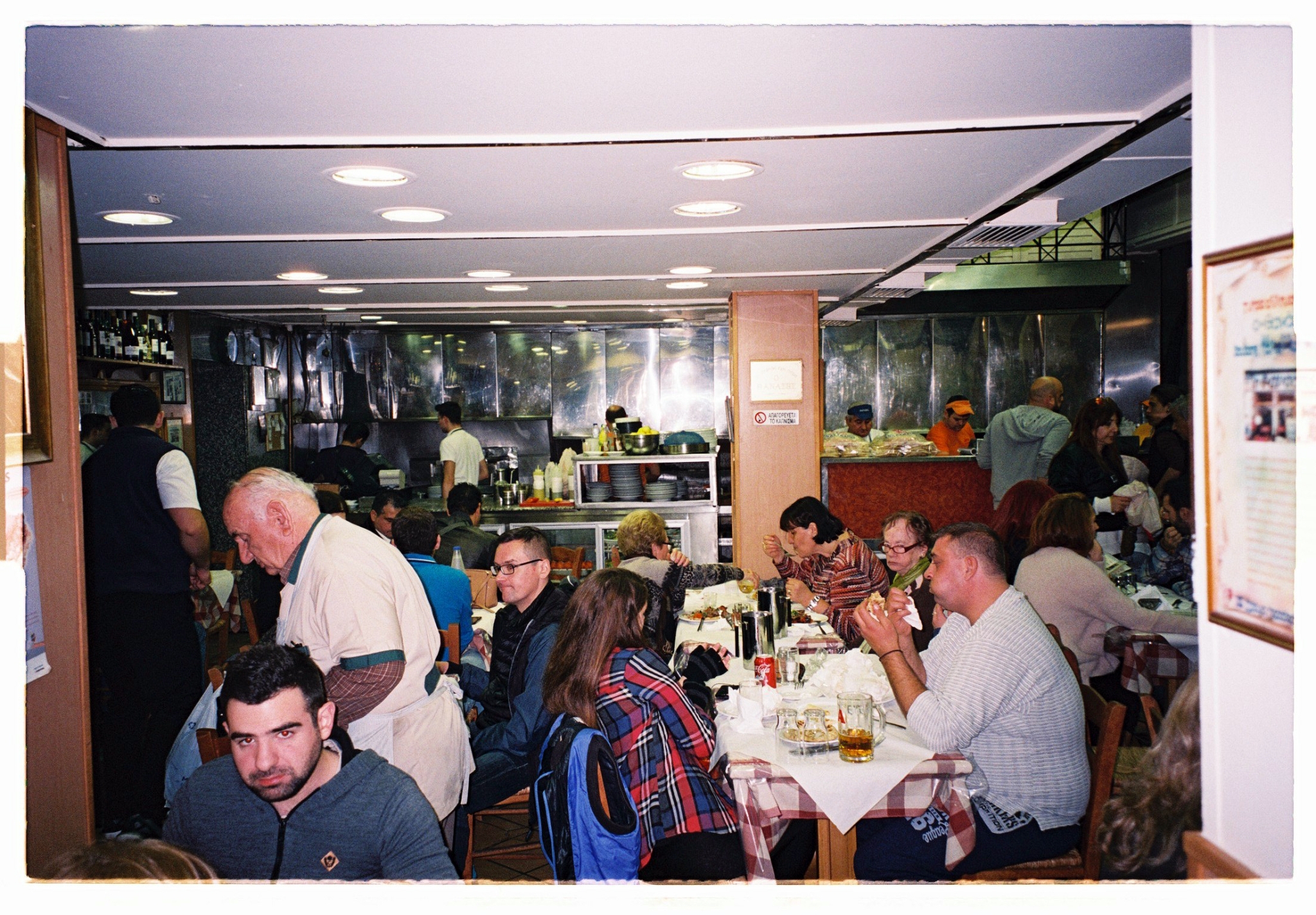
Makis declared that he wanted fish soup. He sauntered up the street where I chanced upon him, and he suggested we get a taxi to the Linou Soumpasis Kai Sia restaurant in Psirri for dinner. “I have had plenty of fish soup in my life, but this is the best one.”
I had met Makis—the owner of Foyer Espresso Bar—when I was on assignment in Athens in 2021 to write about rebetika music; Greece’s melancholic version of the blues. By chance, it was also the worst snowstorm in the city’s history, and the government prohibited live music, which made the whole trip feel like a pointless venture until Makis directed me to rule-bending taverns in darker corners of the city. It was the all-knowing Chris Kontos, as ever, who introduced us, and we immediately grew fond of each other because we had both studied in Lyon, shared a love for cinema, were about the same age, and beside the fact, I could tell he was a good person in all respects.
His coffee shop is the best in Athens and a famous meeting place for creatives. But Foyer is also a means for Makis to gather his favourite artists, musicians and writers together under his dominion, and practically everyone you meet there is creating something worth hearing about, or has the vision to at some point. Chris Kontos comes by very often; a giant, frenetic embodiment of New Athens, even though he might loathe that description, in English scarves and American loafers (I was sad to miss him on this trip). There are colourful drawings by Michael McGregor on the walls and stacks of books by Hugh Corcoran on a small shelf beside photo- journals and pamphlets by faceless Athenian creatives. A table by the bar is stocked with a curation of natural wines. Makis has a tidy little address book filled with important gourmands, cooks, and writers in Paris and London (as well as in Athens) and I am not allowed to write why, at the risk of annoying him, but I know for a fact that he’s one of the most influential figures in the city’s dining scene. When he would raise a fashionable restaurant opening in London that I hadn’t heard about, Makis would playfully remark: “Let me know if you need advice for your own city!” So there were high expectations for the fish soup.
When finally, we were dropped off by Linou Soumpasis and Sia, on an opposing wall I saw large words graffitied in red, a foreboding message: ATHENS IS NOT THE NEW BERLIN. BERLIN IS THE NEW ATHENS.
I asked Makis about this much later. Athens is having a moment and not all Greeks are pleased about this, I told him; surely he must know that. “Moment? What moment?” he replied, “The moment has already gone!” as though referring to the weathered remnants of a temple on a distant hilltop: “Now we’re living with what is left.”
But what remains is why people visit Athens. Now, tourists arrive for new reasons—among them, Linou…, a star of the city’s thriving dining scene. It is very emblematic of the New Athens: minimalist designs, sharer plates, and reinterpretations of Greek classics with few but fresh ingredients. I was given mouthwatering descriptions of sleek Seychelles, spot-of-the- moment Pharaoh in gentrifying Exarchia and Akra in Pangrati. Many do not take reservations. Thankfully, Makis knows people; and he caused a large hurrah from the cooks and waiting staff when we entered the room.
He was correct about the fish soup. It was fatty and thick, seasoned with chilli flakes and salt rocks, and served with tender fillets of sea bass. My favourite dish, though, was an upscaled version of a traditional Greek stew called avgolemono (egg, lemon and milk) topped with grilled lamb, a handful of kidneys and a spinach rice cake. Like so much of Neo-Greek cuisine, the flavours are rooted in grandmother’s home cooking, but reinterpreted at brave new lengths. I cannot imagine this ever happening in Italy with classic Italian dishes, or in France and Spain; and this proves the unique Hellenic willingness to perform open heart surgery on their traditions.
While the country was suffering the financial crisis, many of its sons and daughters returned from their studies or lives abroad, inspired and motivated by what they had seen. Makis mentioned a well-known restaurateur who owned a number of addresses in the city: “his decor is exactly like Kiln in London.” Christine had spent two years in Amsterdam, a place she disliked, but which was ripe with new ideas, a minimalism that contrasts with the Greco-Byzantine glitz and tack, and art galleries full of Rembrandts and Van Goghs. Makis, Chris, Thea, and so many others had nomadic lives in London, Paris, Berlin, Tokyo, or elsewhere in their formative years, and so fashionable Athens is a patchwork of references, shaped by Greek toil and creativity after the crisis. Such is the manner of the wayfaring Hellene—from the time of Odysseus, to Alexander in the North Afghan valleys, the immigrants of Astoria, the shepherds of the Pontos mountains and the Cypriots of little old Wood Green.
What is happening in Athens doesn’t represent the rest of the country. The second city, Thessaloniki, is a vibrant metropolis of eastern influences, Balkan gipsy enclaves, and pastel Sephardim balconies that look out to Ottoman forts, where the finest artists, rebetika musicians (like Dimitris Mitropanos), and poets were born—not to mention the Turkish republican Mustapha Kemal Ataturk. The roguish and seductive Salonikios, a figure immortalised in the Hellenic world, couldn’t be more different in character from the cosmopolitan Athenian (much the same way a Geordie is to someone in Guildford). Thessaloniki is by all accounts steadfast in its tradition, so a lot of what draws tourists to Athens remains in Athens.
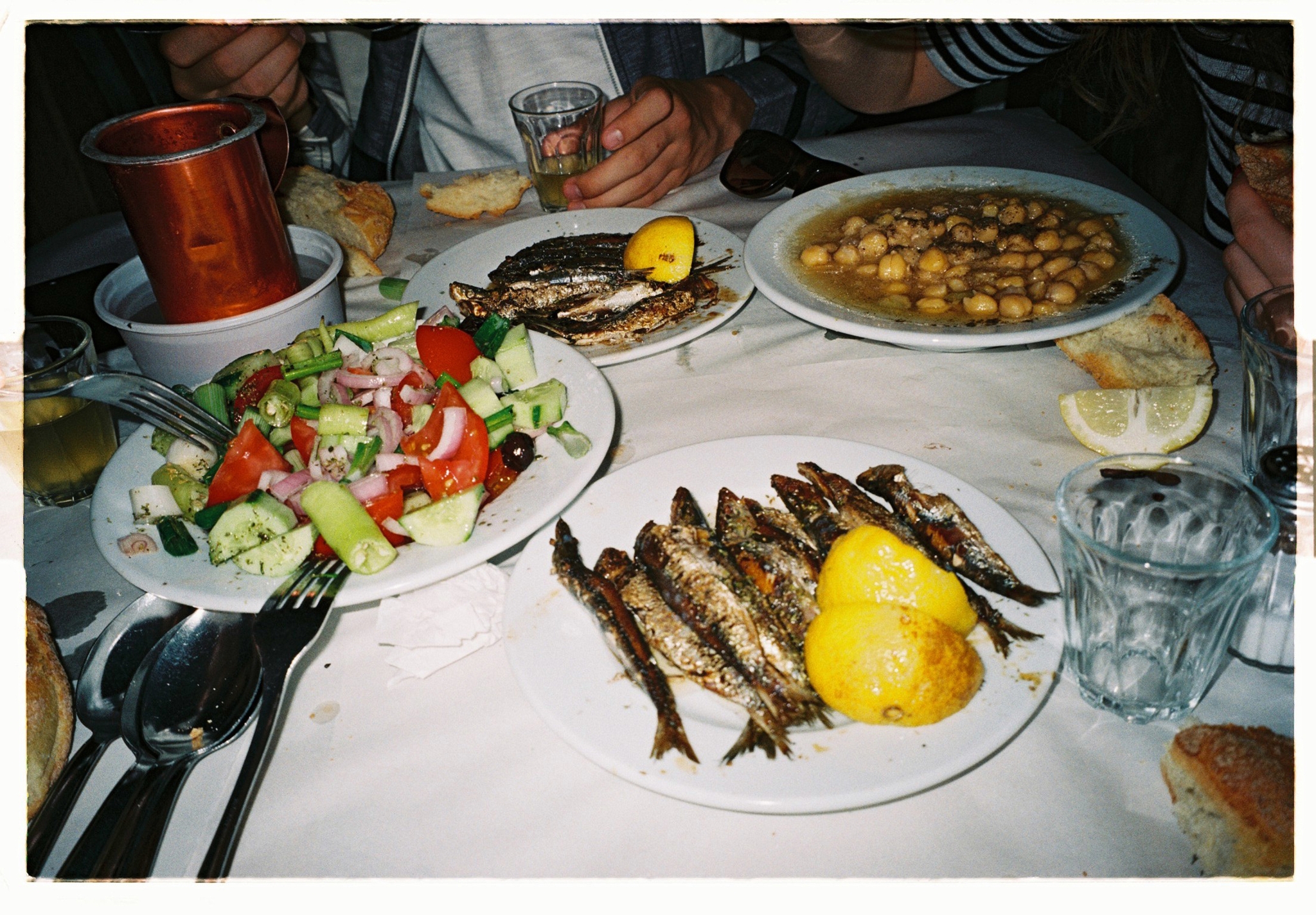
Some of these ideas are finding their way outside of the capital. One evening at Foyer, one of Makis’ friends, a gentle, towering Cretan, the tallest of the Greeks, was persuading him to open a wine bar. He explained his vision to establish a private members club for creatives on Crete, the first of its kind, and Makis would source the wine (his grandfather invented dakos rusks, and he too had lived in London briefly—in Seven Sisters of all places). Whatever the next cool thing is in Athens, I’d hazard a bet it is to do with wine. Everywhere you go in the city, people are talking about wine bars; suggesting this or that place, each of them stocked with natural vintages made with grapes nobody outside of the country has heard of, designed with Berlin-style pop art packaging and obscure names like Fuck You Wine. One of the places that spearheaded the movement is the exceptional Wine is Fine, which takes its cue from French bistros. Chris Kontos has announced his own spot, and the Greco-French filmmaker Romain Gavras co-founded the most fashionable address in town: Epta Martyres. On certain nights, he hires traditional, taverna rebetika singers, but the space is modern.
After dinner, we visited one of my favourite watering holes. The Galaxy Bar walls are covered with randomly-curated photographs of its decades of customers; a brightly lit nook; a huddled, honey-panelled wood scene, bursting with people who spill out into the street. As you drink, the barman places a dish of complimentary snacks. With each drink, the better the snacks get, so you can go from peanuts to charcuterie boards and know you’ve done the full Galaxy gamut. They have a selection of dusty bottles of old cognacs and brandies from across Greece, the most famous being the Metaxa label, which was always well represented in my grandfather’s cabinet in London’s East End. Exactly next to where we stood was, by complete chance, a framed photograph of Yorgos Lanthimos and Emma Stone at Galaxy—the closest I could get to him for this issue of A Rabbit’s Foot.
I met a number of Makis’ friends there. Some had built creative lives in other cities, but had come home to leave their mark, and occasionally there were Grecophile expats who had found their way into the right creative circles. Niclas, a charismatic German musician and DJ, spoke excellent Greek, and we got into talking about Lanthimos’ Poor Things (everyone has a strong opinion on Lanthimos), and whenever I tried to find middle ground by recounting food from my Berlin days, he bent his head back, cooed, and promised Makis: “Obazda! Fleischsalat! Brotchen! Makis, I will bring some for you to try when I next go home.” Makis, happy to hear it, but always preferring deeper conversation, returned us to the topic of art and film, explaining the origins of the Greek Weird Wave: a bizarre 1999 movie called The Attack of the Giant Moussaka. Cinema meant everything to Makis, even more than coffee, and he could hold you in thrilling conversation about film until sunrise. “I think I would die happily if I made a film,” he told me. “It would be the answer to the meaning of life: to contribute to something that you love.” He wrote wonderful short stories that were vivid, with the spirit of Rohmer or Truffaut (France was his keenest source of inspiration, and he spent a lot of his time in Paris), and he spoke about life as though it were a movie. “One of my old girlfriends,” he said to me, as we were swapping woes, “she was great, but I miscast her,” and I enjoyed his filmic analogies to life enormously because I related to them myself. “I have this one film in my mind I would like to make one day,” he told me one evening. We paced around Psirri where people were drinking and mingling in the tungsten-lit streets. “… The film is about documenting Athens as it is now,” he said. “These places and these people. It is about that moment you were asking me about.”
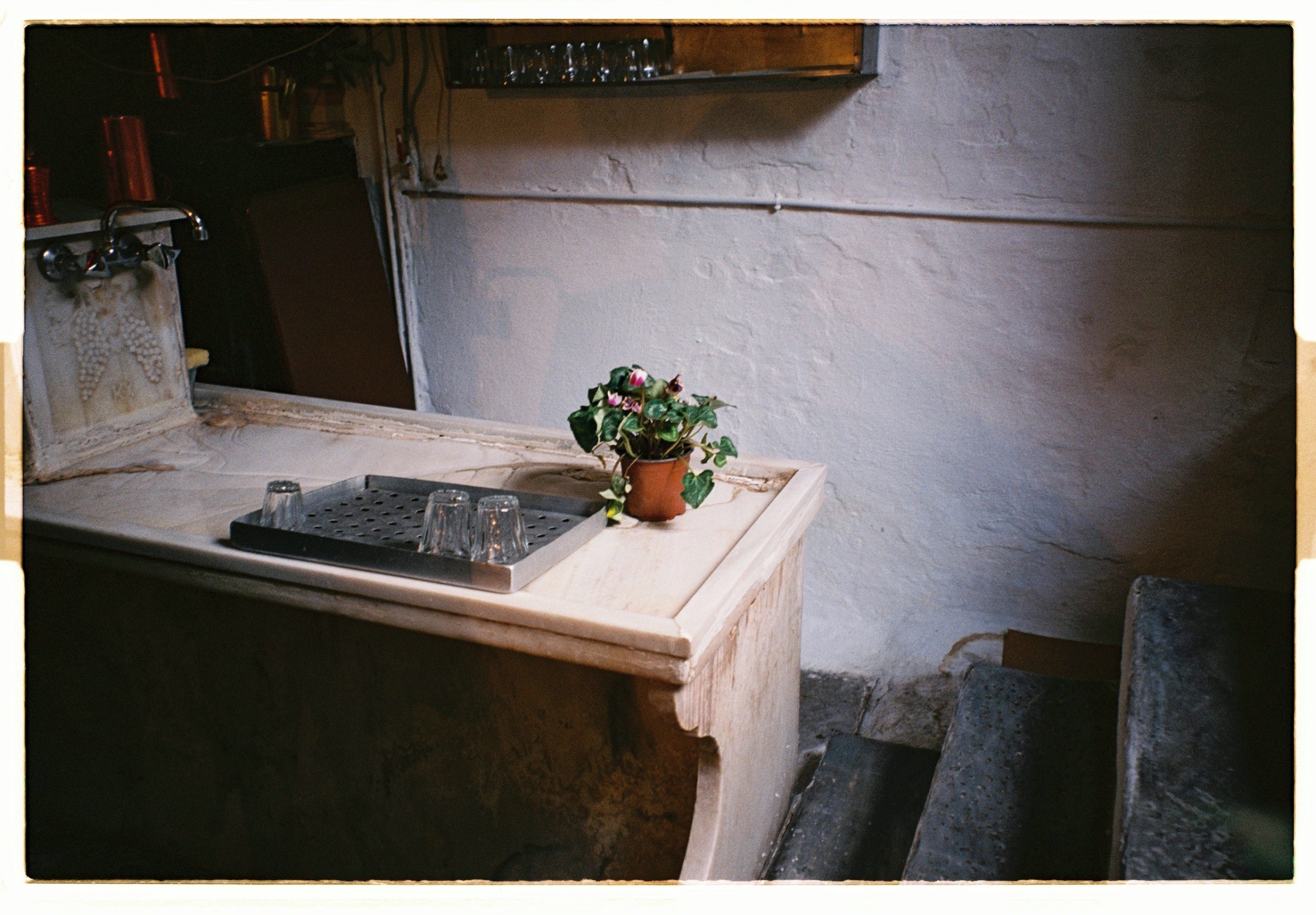
My first impression of Kallithea is that it must have seen better days. As Christine drove me in, weaving through the chaos of Athenian highway traffic, I couldn’t spot a single person wandering through the streets, and the roads featured haplessly-placed pavements sometimes a couple of feet off of the ground and accompanied by large stacks of rubble.
We had left the city to watch the Athens Kallithea football team play against Panathinaikos B. The home team were battling for promotion to the top league of Greek football, and it had been an unorthodox journey. A savvy Greek-American named Ted Philipakos bought the club and had the foresight to build a commercial brand around them while helping grow their football and their reputation outside of Greece—mostly thanks to their fashionable jerseys, which were sponsored by the EMST: the contemporary Greek arts centre. Kallithea shirts were viral and are hard to come by. Because Christine worked as a creative director with the club, she attended almost every game, and as a spectator, she was tense, nervous, sometimes throwing her hands in their air after each misplaced pass or goal, and she enjoyed describing the triumphs and tribulations of Kallithea to me.
Like the suburb, the stadium had a heightened feeling of disconnection from the rest of the world. Built on the site of a quarry, it is surrounded by a sweeping mountain-like backdrop to the north. From the stands, the grandness of its scale makes you feel like you are enclosed in the palms of an ancient stone titan, and because it resembles something out of a Western—and because Kallithea was founded in 1966—the stadium is known as El Paso after the Greek title of Sergio Leone’s For a Few Dollars More (Duel in El Paso). At the start of each game, and after each goal, Ennio Morricone’s iconic whistling score is blared out to the crowd. A hilarious, surreal surprise.
El Paso was strangely empty. There was a nationwide ban on rival fans because of a series of sudden sport-related murders in Greece, including one where a man was impaled on a harpoon gun, and just five minutes in, I got to see it for myself. A large ruckus was caused near the rails when a gentleman of about sixty sparked a security guard in the jaw, and after refusing to be restrained by a group of other fans, began threatening them too. This naturally led to returned threats, shoves, and then more blind swinging and cursing, and with the police stationed outside, the crowd took the matter into their own hands and escorted the man like a belligerent toddler out of the stadium. Christine quickly left to fetch the riot police, who conveniently arrived after mob rule had been enforced but the situation was long resolved. It was a pantomime from start to finish. But the Kallithea supporters were a good lot: passionate about their home and their club, and a man in front of us, after enquiring where I was from (and declaring his passion for Leeds United) bought me a miniature bottle of forty-proof Tsiporo to keep me warm. More irrefusable gifting.
The bottle was welcome as it was a dreadfully cold day. Rays of golden light were thinned by the grainy Athenian dust, and because there is so much of it in the air in Athens, a sunny or cloudy day here looks different from how it looks anywhere else, and it made the already desolate stadium feel as though a witch had placed a time-halting hex over us. But by the end of their bout with Panathinaikos B, after watching them win by three goals to nil, I was all in on Kallithea and its miraculous stadium, and roamed the terraces like I had been attending my entire life. From the top, near the radio room where Christine brought me to meet Ted Philipakos, I noticed younger, fashionable people dotted around the stands and among the working class citizens of the suburb, here to feel a part of something they had seen on social media; another example of how the new was coming together with the old.
Ted Philipakos was from New York, and you knew it straight away. “Astoria, Queens,” he explained, proudly, with that no-nonsense New Yorker confidence, and he was immediately likeable because he paid great attention to people, and like me, he was a part of the diaspora; but unlike me he had come to stay in Athens and partake in a frankly mad endeavour by entering the theatrical world of Greek football. He was angry at the team’s performance when we met; visibly frustrated. It wasn’t just fancy jerseys and photoshoots in gauche streets; for Ted, I think, it was about building something in our motherland, and I wonder if anything—even buying a football club—was enough to be accepted in the way so many of us wish to be. Did they perceive him as a Greek or another American with money? Did he see me as a holidaying Brit, or someone like him, who was here in Athens to find a part of themselves? Regardless, he recognised the moment and became a part of it.
Years before, Ted had undertaken a similar project in Italy with Venezia FC. Hailed by the BBC as the “world’s most fashionable football club,” they were more notorious for their photoshoots and jerseys than their football acumen, and even then Christine and Chris Kontos were out designing and photographing his vision in Italy. “But I had to leave,” Ted said to me. “I didn’t know about Italy, or about the Italians, and this is different,” he explained, relaxing into his thick Queens accent, “It makes more sense here, you know? I’m happier here. As a Greek.” And as we drove back into town, I also wondered if I would be happier here, too, you know, “as a Greek.”

One evening, I told my friends I was busy and snuck to an old taverna to be alone.
I wanted wooden beams and barrels of wine without distraction; white-shirted waiters, the smell of lamb roasting in the kitchen, and a mish-mash of familiar tavern props: a porcelain head of Aphrodite, tinsel, amateur paintings of the islands, uneven wicker seats, and a CD that played the weepy songs of Tsitsanis and Kazantzidis all evening. Klimataria was next to my apartment, and inside of the taverna’s walls, the Greece of my dearest memories was found alive and well. Although it isn’t dynamic enough to appear in a Condé Nast article about Athenian dining, I remember something Christine had told me when we walked past the Hotel Grande-Bretagne a few days prior. “In this hotel,” I boasted, recounting a visit from my previous trip, “they make special macaroons with mastichia,” to which she replied, “Why would you want to change something that is already good?”
There were some things you don’t mess with. Even in Athens, where it felt like change was happening everywhere, and all of the time, there was a balance to be struck. The city’s classic taverns are still flooded with people, romantically preserved, and for every suggestion Makis or Christine have for a dinner of, say, three-course deconstructed Greek salad at a swanky minimalist café, they’re as eager to point you to the good stuff that has always been good, and will be good for as long the Parthenon still overlooks the city like its guardian angel. There is a recognition that tradition can also be a part of the future. Not like London.
Christine offered to make me dinner after the game. She placed a bowl of traditional Greek noodles with crumbled feta cheese in front of me, and it was so simple and delicious that to add anything to it—to “change something good,” as she might have said—would’ve been to complicate perfection. It was grandmother’s cooking. It was also the best thing I have eaten in Athens, and I had a pretty fantastic fish soup.
I’m not Athenian, so I can’t speak for them, but I was born and raised in a city that is forever trying to be something it is not, and so I don’t think Athens is changing. It is actually the exact same as it has always been. The ruins have endured. The street musicians are singing the same songs. The cats still wander the alleys; mysterious messengers of the unknown. Where do they go? What do they see? Like the ruins and the prowling cats, the people here “pass time” Makis told me one evening. But they are also sculpting more details into the ancient rock that is their city; not changing it, but unearthing its potential even further.
One thing that will not change is how remarkable the people are here. “Don’t be a stranger,” said Christine, after we shared our goodbyes in Plaka. I ran into her again in a Pangrati street by chance an hour later, in a city of almost four million people. And so life passes by like the cars on Syngrou Avenue, and the passengers are unnamed faces headed to the sea, and that is, at the very least, and according to the marvellous poet Giorgios Seferis, a sign that the world is wide.

